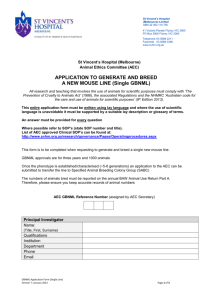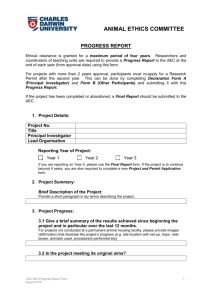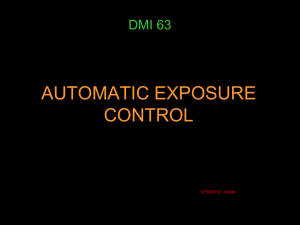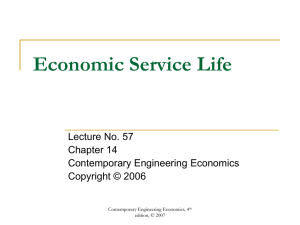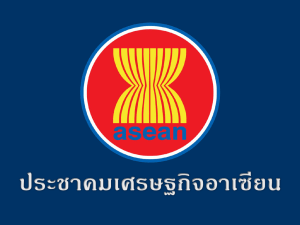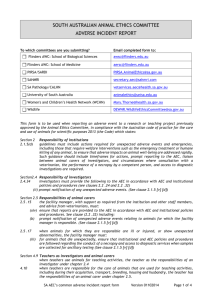AEC Terms of Reference
advertisement
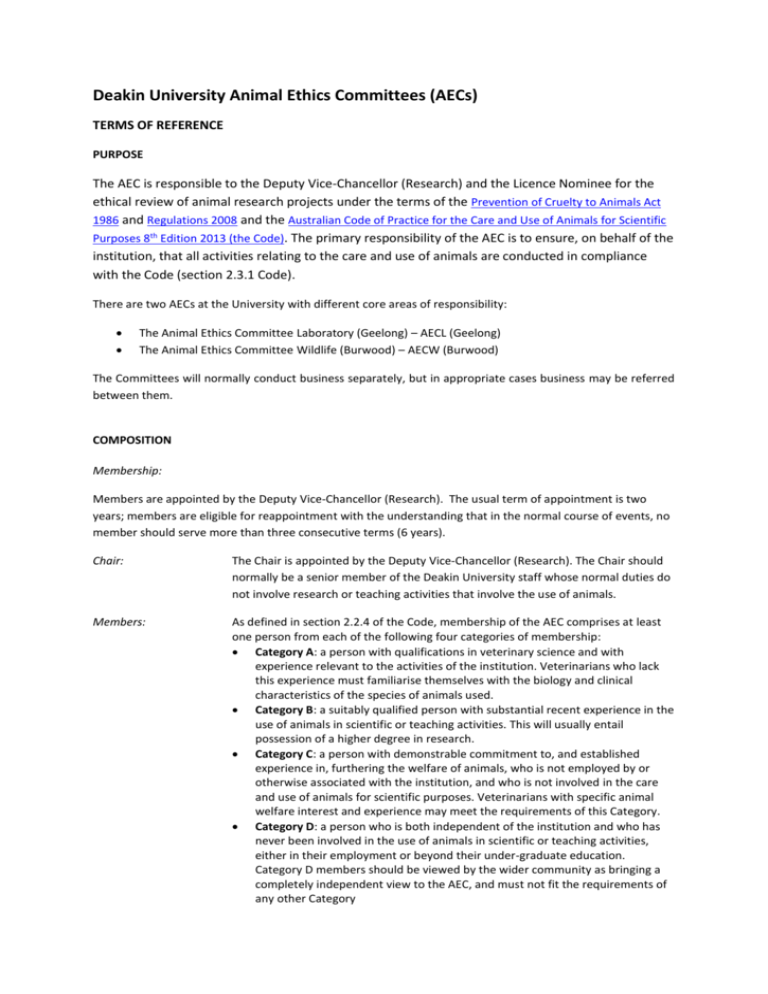
Deakin University Animal Ethics Committees (AECs) TERMS OF REFERENCE PURPOSE The AEC is responsible to the Deputy Vice-Chancellor (Research) and the Licence Nominee for the ethical review of animal research projects under the terms of the Prevention of Cruelty to Animals Act 1986 and Regulations 2008 and the Australian Code of Practice for the Care and Use of Animals for Scientific Purposes 8th Edition 2013 (the Code). The primary responsibility of the AEC is to ensure, on behalf of the institution, that all activities relating to the care and use of animals are conducted in compliance with the Code (section 2.3.1 Code). There are two AECs at the University with different core areas of responsibility: The Animal Ethics Committee Laboratory (Geelong) – AECL (Geelong) The Animal Ethics Committee Wildlife (Burwood) – AECW (Burwood) The Committees will normally conduct business separately, but in appropriate cases business may be referred between them. COMPOSITION Membership: Members are appointed by the Deputy Vice-Chancellor (Research). The usual term of appointment is two years; members are eligible for reappointment with the understanding that in the normal course of events, no member should serve more than three consecutive terms (6 years). Chair: The Chair is appointed by the Deputy Vice-Chancellor (Research). The Chair should normally be a senior member of the Deakin University staff whose normal duties do not involve research or teaching activities that involve the use of animals. Members: As defined in section 2.2.4 of the Code, membership of the AEC comprises at least one person from each of the following four categories of membership: Category A: a person with qualifications in veterinary science and with experience relevant to the activities of the institution. Veterinarians who lack this experience must familiarise themselves with the biology and clinical characteristics of the species of animals used. Category B: a suitably qualified person with substantial recent experience in the use of animals in scientific or teaching activities. This will usually entail possession of a higher degree in research. Category C: a person with demonstrable commitment to, and established experience in, furthering the welfare of animals, who is not employed by or otherwise associated with the institution, and who is not involved in the care and use of animals for scientific purposes. Veterinarians with specific animal welfare interest and experience may meet the requirements of this Category. Category D: a person who is both independent of the institution and who has never been involved in the use of animals in scientific or teaching activities, either in their employment or beyond their under-graduate education. Category D members should be viewed by the wider community as bringing a completely independent view to the AEC, and must not fit the requirements of any other Category Additional members: A person responsible for the routine care of animals within the institution may be appointed as an additional member to assist the AEC (ex-officio) Additional members may be appointed with skills and background of value to the AEC for particular purposes and specified periods. Access to expertise: The Animal Welfare Officer shall attend each AEC meeting in an advisory capacity. The AEC may invite people with specific expertise to provide advice, as required (section 2.2.7 Code) FUNCTIONS 1. To provide advice and recommendations to the institution regarding the care and use of animals for scientific purposes conducted on behalf of the institution, and strategies required to ensure that the requirements of the Code are maintained and that matters affecting animal wellbeing are addressed (section 2.3.27) 2. To review applications for all proposed research and teaching activities involving the use of animals, and to approve only those which conform to the requirements of the Code. 3. To review applications for activities associated with the care and management of animals in facilities, including procedures applicable to breeding programs integral to the maintenance of an animal line, and approve only those activities that are ethically acceptable to the requirements of the Code. 4. To conduct follow-up review of approved projects and activities and allow continuation of approval for projects and activities that are ethically acceptable and conform to the requirements of the Code. The Committee may withdraw approval for any project that does not comply with the Code. 5. To monitor the care and use of animals, including housing conditions, practices and procedures involved in the care of animals in facilities and ensure that the standards of these facilities are maintained and guidelines for animal use and welfare are followed. 6. To take appropriate actions regarding unexpected adverse events. 7. To take appropriate actions regarding non-compliance with the Code and AEC approval. 8. To approve guidelines for the care and use of animals that are bred, held and used for scientific purposes on behalf of the University (including acquisition, transport, production, housing, care, use and disposal of animals). 9. To maintain records of all applications for approval and the decisions of the Committee, and to make appropriate information from these records available in response to requests from a duly constituted authority. 10. To examine and comment on all institutional plans and policies that may affect the welfare of animals used for scientific purposes. 11. To undertake any other duties required of an Animal Ethics Committee under the Code. 12. To report at least annually to the University on the activities and operation of the Committee. OPERATION Confidentiality Before appointment, all members of the AEC must acknowledge in writing their acceptance of the terms of reference of the AEC and the Deed of Confidentiality Quorum To establish a quorate AEC for the conduct of a meeting, at least one member from each of categories A, B, C and D must be present at meetings, and must be present throughout the meeting. Categories C and D together must represent at least onethird of those members present. (Section 2.2.25 Code) Conflict of interest Members must declare any perceived, potential or actual conflicts of interest at the start of the meeting. For AEC decision making, members with a conflict of interest must withdraw from the meeting on matters that relate to that conflict of interest. Once such members have withdrawn, the remaining members must constitute a quorum (section 2.3.12 Code) AEC Decisions Decisions should be made on the basis of consensus. Decisions should be based on a thorough, fair and inclusive process of discussion and deliberation by AEC members present at meeting. Where consensus cannot be reached after reasonable effort to resolve differences, the AEC should explore with the applicant(s) ways of modifying the project or activity that may lead to consensus. If consensus is still not achieved, the AEC should only proceed to majority decision after members have been allowed a period of five working days to review their positions, followed by further discussions (section 2.3.11 Code) Communication The AEC must clearly communicate its decisions, the reasons for its decisions and any conditions attached to an approval to investigators in writing within five working days. AEC Executive The AEC may establish an Executive to function in compliance with section 2.2.33 of the Code. Effective Date 1st January 2016

